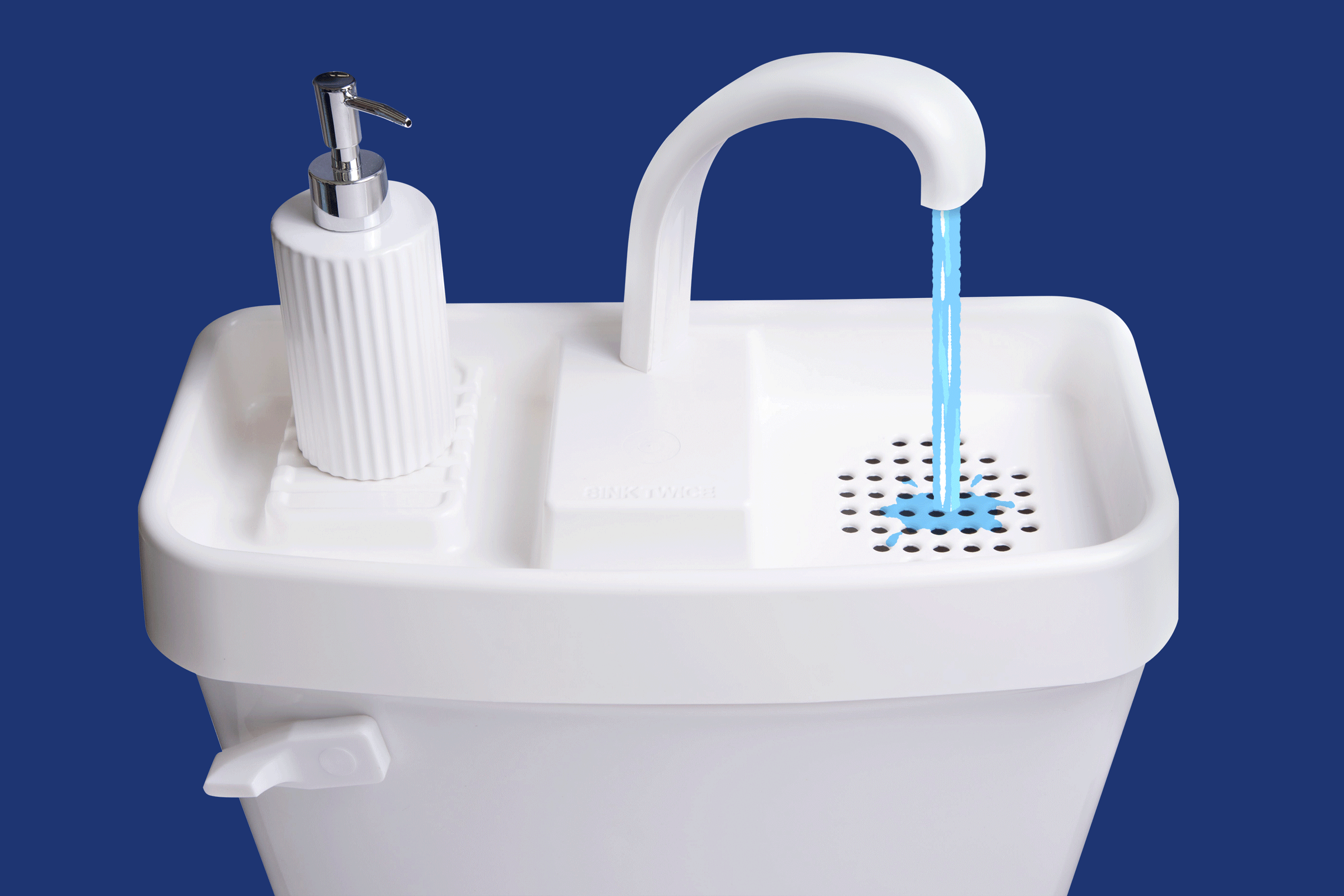Self-Cleaning Cat Boxes Have Way to Go Before They’re Purrfect
- Share via
Let’s face it--cleaning a cat’s litter box is perhaps the most disgusting household chore. I dread my morning routine of fishing for fresh clumps with a slotted scoop and trying to drop them into a plastic bag without making a bigger mess.
At the advanced age of 20, 7-pound Prietita is missing a canine tooth and needs arthritis medication, but otherwise seems to be in ripping good health. Though her strongly held opinions about brands and flavors of cat food are subject to change without notice, she is a remarkably efficient food processor, capable of utterly befouling a litter box in less than 24 hours.
And she is just one of an estimated 73 million pet felines in America processing cat food that must be cleaned up, a collective task that surpasses Hercules’ labor in the Augean stables in its epic proportions. Cats live in one-third of the nation’s households, and it’s a safe bet that many of their human companions wish they had some alternatives to culling smelly litter boxes with plastic shovels better suited for a child’s day at the beach.
Enter self-cleaning cat boxes--contraptions with big aspirations, but a way to go before they’re perfect.
There are two main contenders we asked Prietita to test: the popular electric-eyed Litter Maid, thousands of which already have been sold, and Litter Free, a recent Israeli invention that hooks up to your plumbing and swooshes out the cat box with soapy water then dries it with a blast of warm air.
Litter Maid
Litter Maid is the reigning leader of self-cleaning cat boxes and is widely available in stores or on the Internet. It ranges from $100 to $200, depending on how big a model and how many accessories you buy. At the top end is the Mega Self-Cleaning Litter Box intended for households with multiple cats. It comes with a privacy tent, a ramp to help cats in and out and clean litter off their paws, and 12 waste receptacles.
For Prietita I selected the deluxe model, which is about the size of an ordinary cat box and comes with waste receptacles and ramp for $150. Setting it up was easy. All you have to do is snap a few plastic pieces together, plug it in or install batteries and pour in a layer of premium non-clumping litter available just about anywhere.
Introducing the cat to the new gizmo was easy too. I removed her standard litter box and replaced it with the Litter Maid. Prietita usually prefers to go outside, but she will use the box if no one is around to let her out. Within a few hours, she approached the back door. Finding it shut, she looked at the door and looked at the Litter Maid.
Door, Litter Maid. Door, Litter Maid. So I gently picked her up and placed her in the sand.
For a moment or two she didn’t move. Suddenly she took care of business. Then, ignoring the ramp, she hopped out of the box and strode quickly out of the room, leaving a trace of cat litter on the floor.
Her departure from the Litter Maid had been noted by an electric eye in the middle of the box. Ten minutes later I watched as the motor revved up and triggered an entertaining Rube Goldberg sequence.
A plastic rake stretched across the width of the litter area came out of its resting place and began to traverse the length of the box. Midway across it snared the clump of damp cat litter and pushed it forward. As the rake and clump reached the other end, the lid on a built-in container at the edge popped open.
The rake smoothly dumped the clump in the waste receptacle and began a retreat back across the surface of the litter as the lid on the waste box snapped shut. Within seconds the clump was gone and the litter was as smoothly raked as a Japanese rock garden.
The Litter Maid is designed so that the user can punch the plastic lid down on the disposable receptacle and replace it without ever having to come face to face with a few days’ worth of cat waste.
One can remove the loaded container fairly easily, but replacing it began a new gross-out for me. Clotted sand eluded the waste receptacle and ended up on the floor. I found it impossible to snap the replaceable plastic containers and lids into place as perfectly as they had arrived from the factory. Since they weren’t positioned just right, the lid to the waste bin wouldn’t shut completely so it no longer trapped odors--which seemed worse than an ordinary cat box.
Also, the rake plowing into fresh excrement had a tendency to smear the waste as it pushed up the curved slope toward the container. The instruction manual chirpily describes how easy it is to take the device apart and clean it (“Be sure to wear gloves,” it reminds us). That may be so, but I’d had it with the Litter Maid after two weeks.
Many users who wrote to Epinions.com about Litter Maid felt the same way. Forty-four percent did not recommend the product and offered such criticisms as “noisy, messy, you have to clean up after the maid” and “like flushing $160 down the toilet.”
Litter Free
The new competitor is Litter Free, the product of five years of research and development in Israel, according to Michael Levy, president of Pet Food Express of San Leandro, Calif., the product’s first retailer in the United States. It’s available for $299 at Pet Food Express stores in Northern California, at https://www.petfoodexpress.com, at https://litterfree.com or by calling (866) LTR-FREE (587-3733).
Last week the Litter Free was declared the best new product in the cat category at the American Pet Products Manufacturers Assn. annual trade show.
Weighing about 40 pounds, Litter Free is easily the sturdier of the two. Its heavy-duty power unit sits atop a solid plastic tub that resembles a standard litter box with higher sides. Assembling the unit was effortless, until it came time to hook it to a water supply.
The optimal method would probably be to connect it to a washing machine tap and drain, but that wasn’t possible because of where my washer is located. I opted for attaching the water supply hose into the shut-off valve of a toilet.
This looks simple and is supposed to take no more than a few minutes, but the brass part supplied with the unit was not compatible with my plumbing. After two fruitless trips to Home Depot in search of replacement parts, I called my trusted plumber, Mighty Moe.
Moe solved the problem in a short while at a cost of $60, mostly for labor. We hooked the drainage hose on the toilet bowl and pressed the button to attempt our first flush. The tub filled with water and the power unit soon began to circulate it, vigorously swirling the little blue and white plastic beads that substitute for litter. After the water drained into the toilet, we whooped as Moe reached out to shake my hand.
Mechanically, the system definitely works. Feces liquefy and are sucked out with the water. The cleaning cycle repeats three times, then a cleaning solution is dispensed to treat odors and is drained again. Finally the pellets are blown dry with warm air. The whole process takes nearly a half an hour, which may be an inconvenience for a cat who is waiting to go.
A timer can be programmed to flush the unit up to three times a day. The plastic granules should be replaced every six months at a cost of $25, and the $17 cleaning solution is enough for 60 flushes. You will flush more often when the Litter Free is new, because everyone who visits your home will want to see it rock.
Prietita was somewhat less impressed than Moe and I were. Instructions say to move your old cat box closer and closer to the Litter Free, and then remove it. Place one of your cat’s stools on the Litter Free beads, then wait for her to find it and make more. Don’t be alarmed, the instructions say, if your cat chooses not to eliminate anything for up to 24 hours as she sizes up the new commode.
I knew Prietita would never wait that long, so I closed her in the bathroom one night with food, water and the baited Litter Free. In the morning the food was almost gone and the cat was a little annoyed, but she had used the Litter Free.
She’s used it most of the time since then, but still often asks to go outside too. Levy says outdoor cats like Prietita require more patience than indoor cats. This was brought home to me a few times when Prietita chose to go on the floor near the Litter Maid. In three weeks she hasn’t completely accepted it, but she seems to have forgiven me for the experiment.
Here’s one critical warning: Never, ever remove the exhaust hose from the rim of the toilet bowl without replacing it. We had a guest once and unhooked it out of some sense of mannerliness. I neglected to put the hose back before flushing the Litter Maid and returned to find about 3 1/2 gallons of poopy-soapy water on the bathroom floor.
It was a blunder I won’t repeat.
*
Roger Vincent is an assistant Business editor at The Times.
More to Read
Sign up for Essential California
The most important California stories and recommendations in your inbox every morning.
You may occasionally receive promotional content from the Los Angeles Times.














